The Center invites HED science researchers to deliver presentations as part of our weekly seminar series for LLNL staff, postdocs, and interns.
All presentations are the work of the speakers and owned by their respective institutions. We thank the speakers for permission to post their work here. To watch featured seminars, please visit the Livermore Lab Events YouTube channel.
If you are interested in delivering a seminar, we invite you to contact Federica Coppari, seminar series chair, at coppari1 [at] llnl.gov (coppari1[at]llnl[dot]gov)
Sébastien Thevenin
CEA/DAM
University Paris-Saclay
In this work, we consider the problem of inferring the initial conditions of...
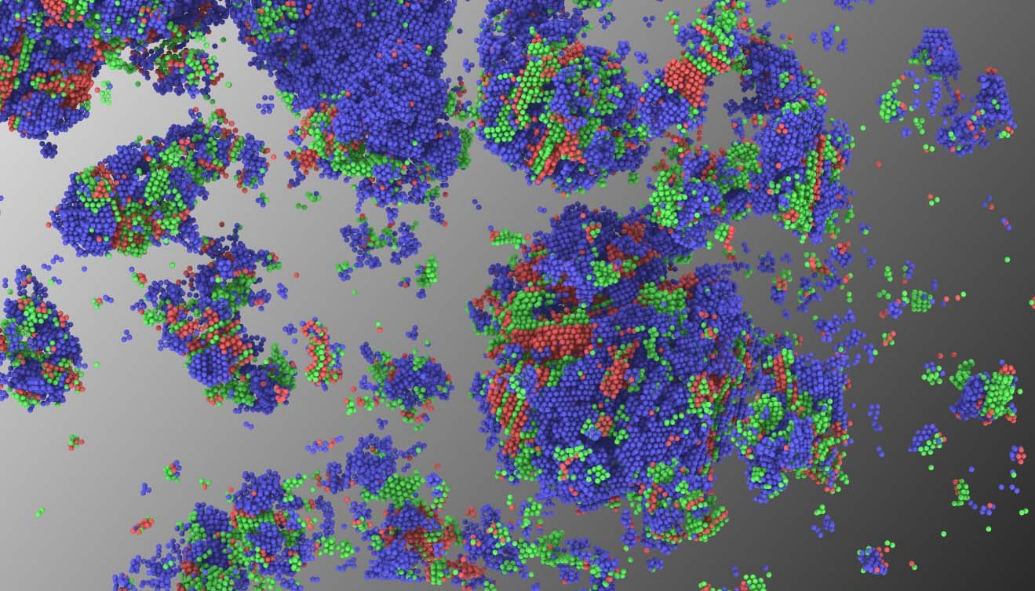
Sébastien Thevenin
CEA/DAM
University Paris-Saclay
In this work, we consider the problem of inferring the initial conditions of a Rayleigh-Taylor mixing zone by measuring the 0D turbulent quantities at an undetermined time. To this aim, we generate a large dataset of direct numerical simulations (DNS) within the framework of small-density contrast miscible fluids and where the initial interface deformations are determined by an annular spectrum parameterized by four non-dimensional numbers. In order to study the sensitivity of 0D turbulent quantities to the initial interface perturbation distributions, we build a surrogate model for the simulations using a physics-informed neural network (PINN). This allows to compute the Sobol indices for the turbulent quantities, disentangling the effects of the initial parameters during the mixing layer growth. Within a Bayesian framework, we use a Markov chain Monte-Carlo method to determine the posterior distributions of initial conditions given various state variables. This sheds light on the inertial or diffusive trajectories along with how the initial conditions are progressively forgotten during transition to turbulence. Besides, it selects which turbulent quantities are more suitable to predict the dynamics of Rayleigh-Taylor mixing zones as keeping better the memory of the flow. By inferring the initial conditions and forward propagating its maximum a posteriori (MAP), we then propose a strategy to model the Rayleigh-Taylor transition to turbulence.
Dr. Hui Chen
Lawrence Livermore National Laboratory
The study of relativistic electron–positron pair plasmas is both of fundamental physics interest and...
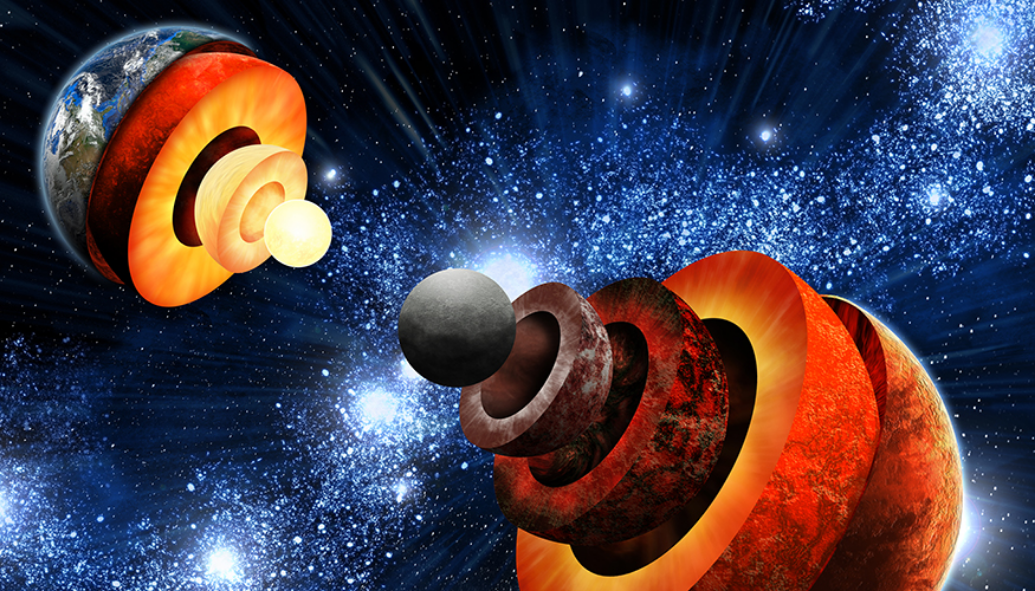
Dr. Hui Chen
Lawrence Livermore National Laboratory
The study of relativistic electron–positron pair plasmas is both of fundamental physics interest and important to understand the processes that shape the magnetic field dynamics, particle acceleration, and radiation emission in high-energy astrophysical environments. Although it is highly desirable to study relativistic pair plasmas in the laboratory, their generation and control constitutes a critical challenge. Significant experimental and theoretical progress has been made over recent years to explore the use of intense lasers to produce dense relativistic pair plasma in the laboratory and study the basic collective plasma processes associated with these systems. Important challenges remain in terms of improving the number of pairs, system size, and control over the charge neutrality required to establish laboratory platforms that can expand our understanding of relativistic pair plasma and help validate underlying models in conditions relevant to high-energy astrophysical phenomena. We will highlight recent progress in this field, discuss the main challenges, and explore the exciting prospects for studying relativistic pair plasmas and astrophysics relevant instabilities in the laboratory in the near future.
Dr. Yuki Abe
Osaka University
The "inverted-corona" fusion scheme has been investigated as an alternative approach to inertial confinement fusion (ICF) ...
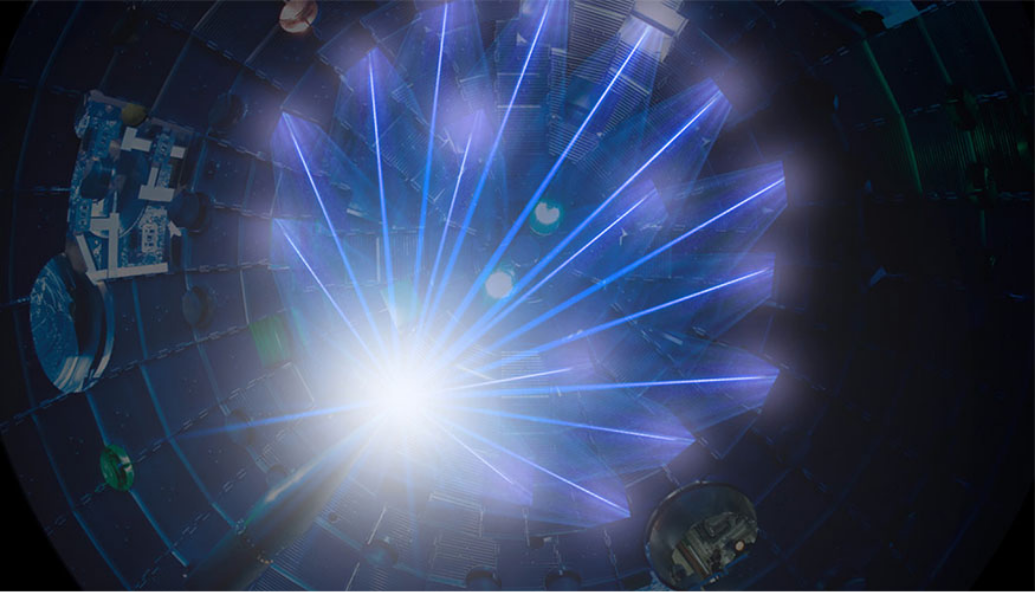
Dr. Yuki Abe
Osaka University
The "inverted-corona" fusion scheme has been investigated as an alternative approach to inertial confinement fusion (ICF) with improved robustness to significant laser-drive asymmetries. The inverted-corona fusion is based on the laser ablation inside a hollow target (e.g., a spherical capsule or cylindrical capillary). The ablative plasma convergence results in the generation of burning plasma core with extremely high temperatures (Ti ~ 10 keV) and modest densities (ni ~ 1e21 /cc) that could be a good point neutron source with diameters of less than 100 um. Such target designs are robust to low-mode drive asymmetries, allowing single-sided laser drive with neutron performance comparable to nearly spherically symmetric drive. Recently, we have demonstrated significant neutron enhancement by an advanced inverted-corona scheme, where lasers with relativistic intensities are used to drive TNSA-induced plasma convergence. Here, we discuss our recent experimental results on the inverted-corona fusion scheme and its potential applications in high energy density physics.
Dr. Liam Stanton
San Jose State University
Transport processes ar...
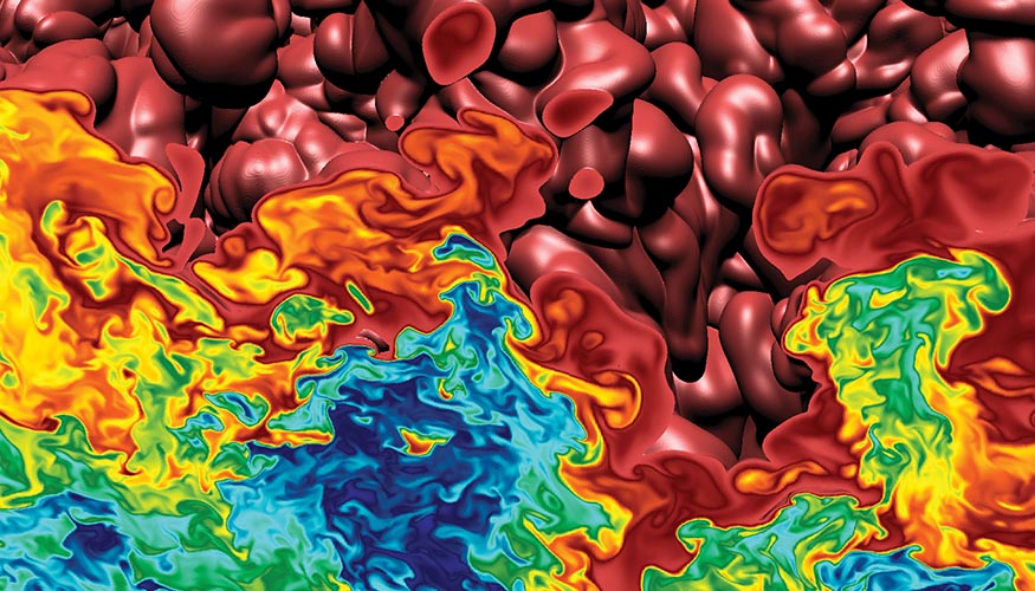
Dr. Liam Stanton
San Jose State University
Transport processes are important to accurately quantify the hydrodynamic description of plasmas, where these processes are typically captured through transport coefficients that relate the flux of one quantity in terms of the gradient in another. This talk will explore the extent to which simple screening models for particle interactions can capture the transport processes of non-ideal plasmas, such as the dense plasmas found in inertial confinement fusion (ICF) experiments. We have developed a simplified but effective potential approach that borrows from both the Boltzmann and Lenard-Balescu frameworks that yields accurate and computationally efficient fits for all of the relevant cross-sections and collision integrals needed to construct transport coefficients. Our results, which span the parameter regimes relevant to ICF, have been validated with molecular dynamics (MD) simulations for self-diffusion, inter-diffusion, and viscosity, with promising comparisons to experiments as well. MD simulations have also been used to examine the underlying assumptions of this effective Boltzmann approach through a categorization of behaviors of the velocity autocorrelation function. While this model was originally intended for ionic transport, the model can be applied to transport dominated by electronic interactions as well, such as thermal and electrical conductivity. Finally, the model can be extended to include dynamic screening effects for velocity-resolved transport processes like stopping power.
Dr. Atilla Cangi
Center for Advanced Systems Understanding
Helmholtz-Zentrum Dresden-Rossendorf (HZDR), Germany
In this talk, I will present two ...

Dr. Atilla Cangi
Center for Advanced Systems Understanding
Helmholtz-Zentrum Dresden-Rossendorf (HZDR), Germany
In this talk, I will present two lines of our research. In the first part, I will discuss the application of time-dependent density functional theory (TDDFT) in modeling observables induced in matter under extreme conditions, such as the electron loss function relevant to scattering experiments with X-ray free electron lasers and the electrical conductivity in metals. In the second part, I will highlight our recent progress in leveraging Artificial Intelligence (AI) to enhance the efficiency of electronic structure calculations. Specifically, I will focus on our efforts to accelerate Kohn-Sham density functional theory calculations at finite temperatures by integrating deep neural networks into the Materials Learning Algorithms framework. Our results demonstrate significant improvements in calculation speed for metals up to their melting point. Additionally, our implementation of automated machine learning has led to substantial savings in computational resources for identifying optimal neural network architectures, paving the way for large-scale AI-driven investigations. Lastly, I will present our latest breakthrough, showcasing the capability of neural-network-driven electronic structure calculations for systems containing over 100,000 atoms.
Dr. Tobias Dornheim
Center for Advanced Systems Understanding (CASUS), D-02826 Görlitz, Germany
Helmholtz-Zentrum Dresden-Rossendorf (HZDR), D-01328 Dresde...
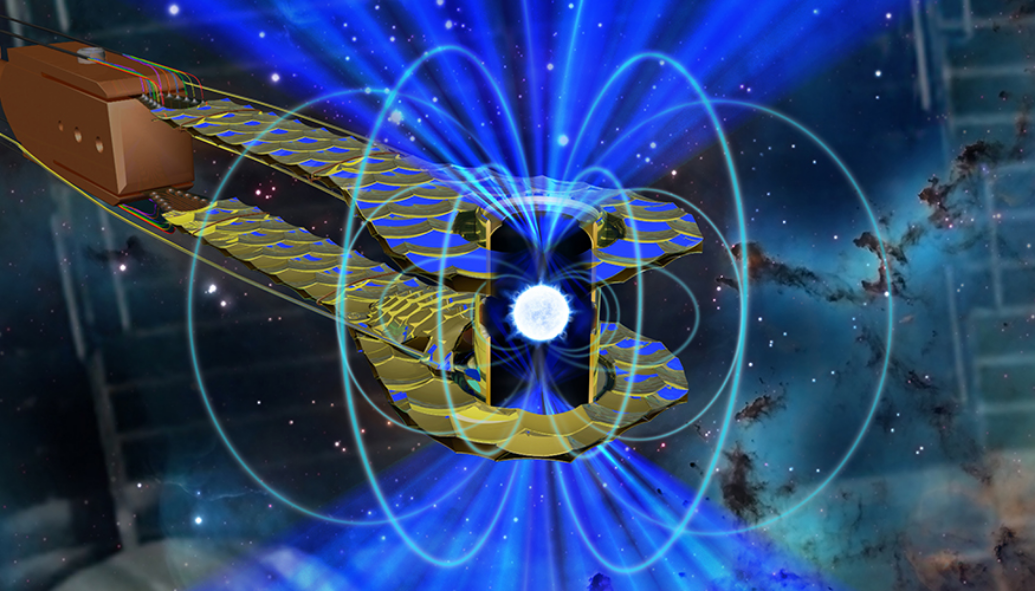
Dr. Tobias Dornheim
Center for Advanced Systems Understanding (CASUS), D-02826 Görlitz, Germany
Helmholtz-Zentrum Dresden-Rossendorf (HZDR), D-01328 Dresden, Germany
Warm dense matter (WDM)---an extreme state that is characterized by extreme densities and temperatures—has emerged as one of the most active frontiers in plasma physics and material science. In nature, WDM occurs in astrophysical objects such as giant planet interiors and brown dwarfs. In addition, WDM is highly important for cutting-edge technological applications such as inertial confinement fusion and the discovery of novel materials. In the laboratory, WDM is studied experimentally in large facilities around the globe, and new techniques have facilitated unprecedented insights. Yet, the interpretation of these experiments requires a reliable diagnostics based on accurate theoretical modeling, which is a notoriously difficult task. In this work, I will give an overview of how we can use exact ab-initio path integral Monte Carlo (PIMC) simulations together with thermal density functional theory (DFT) calculations to get new insights into the behavior of WDM. Moreover, I will show how switching to the imaginary time representation allows us to significantly improve the interpretation of X-ray Thomson scattering (XRTS) experiments, which are a key diagnostic for WDM. Specifically, I will present a model-free temperature diagnostic based on the well-known principle of detailed balance, but available for all wave numbers, and a new idea to directly extract the electron— electron static structure factor from an XRTS measurement. As an outlook, I will show how new PIMC capabilities will allow to give us novel insights into electronic correlations in warm dense quantum plasmas, leading to unprecedented agreement between experiments and theory.
Alessio Morace
Institute of Laser Engineering, Osaka University
High Energy Density Physics is the field of physics dedicated to the study of matter and...
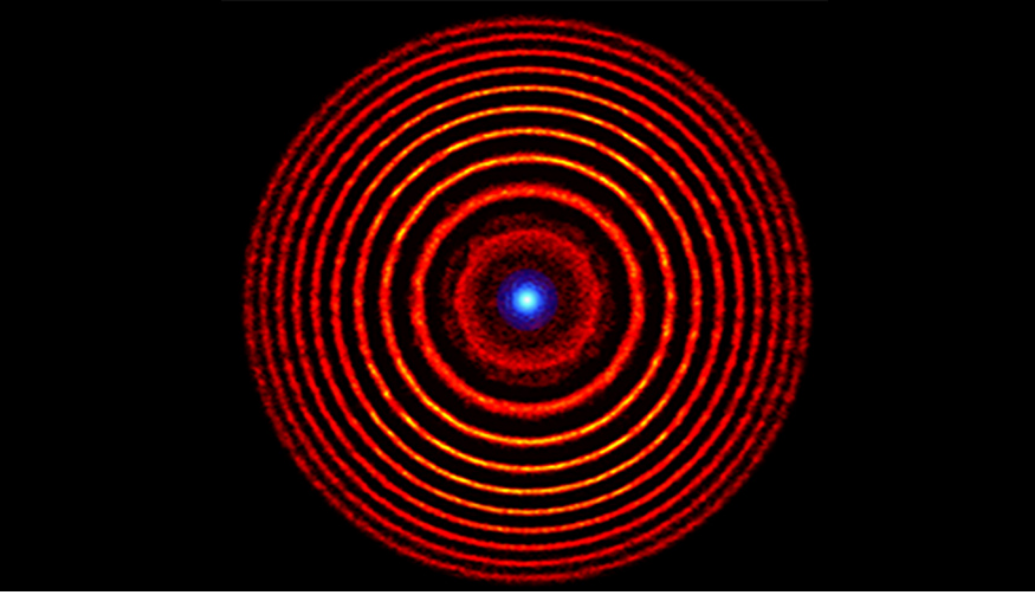
Alessio Morace
Institute of Laser Engineering, Osaka University
High Energy Density Physics is the field of physics dedicated to the study of matter and plasmas in extreme conditions of temperature, densities, and pressures. It encompasses multiple disciplines such as material science, planetary science, laboratory, and astrophysical plasma science. For the latter, High Energy Density states can be accompanied by extreme radiation environments and super-strong magnetic fields. The creation of high energy density states in the laboratory consists in concentrating/depositing large amounts of energy in a reduced mass, typically solid material sample or dense plasma, over a time shorter than the typical timescales of heat conduction and hydrodynamic expansion. Laser-generated, high current-density ion beams constitute an important tool for the creation of High Energy Density states in the laboratory. Focusing plasma devices, such as cone-targets are necessary in order to focus and direct these intense beams towards the heating sample or dense plasma, while protecting the proton generation foil from the harsh environments typical of an integrated high-power laser experiment. A full understanding of the ion beam dynamics in focusing devices is therefore necessary in order to properly design and interpret the numerous experiments in the field. In this work, we report a detailed investigation of large-scale, kilojoule-class laser-generated ion beam dynamics in focusing devices and we demonstrate that high-brilliance ion beams compress magnetic fields to amplitudes exceeding tens of kilo-Tesla, which in turn play a dominant role in the focusing process, resulting either in a worsening or enhancement of focusing capabilities depending on the target geometry.
Wendell T. Hill, III
Institute for Physical Science & Technology
Department of Physics, University of Maryland
Multi-petawatt laser pulses of...

Wendell T. Hill, III
Institute for Physical Science & Technology
Department of Physics, University of Maryland
Multi-petawatt laser pulses of short duration have placed us at the threshold of a new era where novel experimental investigations of nonlinear quantum electrodynamics (QED) will be possible. Never before feasible tests of QED from the photon side, and the intimate coupling between QED and the quantum vacuum are on the horizon. The very essence of the vacuum is entangled with a fundamental tenet of quantum physics—quantum fluctuations—virtual particles and antiparticles (e.g., electron-positron pairs) fluctuating into and out of existence. Quantitative measurements of virtual particles not only will challenge calculations from the 1930s, they will also set strenuous laboratory limits for add-ons to the Standard Model of Particle Physics. The Bosonic nature of photons allows arbitrarily large numbers of photons to pile up in one location. Classical electrodynamics would naively suggest than nothing unusual will happen when focusing laser pulses to higher and higher intensity in the vacuum until the so-called Schwinger limit, Icr ≃ 2×1029 W/cm2 is reached, where real matter is coaxed, albeit not so gently, out of negative energy states. Long before Icr, however, QED warns us that the linear response of light propagating in vacuum, as Maxwell equations demand, gives way to a nonlinear behavior—light-light interaction. Post-Maxwellian theories, such as QED and Born-Infeld, allow virtual pairs to mediate this interaction between photons that can be viewed, to some extent, as light propagating through material. Before real pairs emerge, however, QED predicts virtual pairs will cause the vacuum to become birefringent. This effect is expected to become unambiguously discernible in photon-only experiments between 1023 and 1025 W/cm2, arguably just around the corner. In this talk we will discuss one possible way to measure the birefringence via photon-photon scattering, what new physics can be learned in such a measurement, and the technical challenges impeding the realizations of such measurements. In addition, I will present recent advances we have made toward addressing some of these challenges.
Professor Carol Silva & Professor Hank Jenkins-Smith
Oklahoma University
The successful development of fusion energy will require addressing both te...

Professor Carol Silva & Professor Hank Jenkins-Smith
Oklahoma University
The successful development of fusion energy will require addressing both technical and social challenges. In this paper we focus on the latter, using survey data from a representative sample of the US public to evaluate prospects for sustainable public support for fusion. We demonstrate that while fusion is broadly viewed in a generally positive light across age, gender and partisan groups, most people acknowledge knowing little about the technology. The current array of images and emotions associated with fusion energy technologies tends to be positive, particularly in comparison with those evoked by traditional fission nuclear energy. Positive views of fusion get a boost from technological optimism, but connection to and fear of fission nuclear energy tends to reduce support. Trust for regulators and operators of prospective fusion energy facilities is currently quite high and is strongly associated with support for fusion energy. Implications are that fusion has the potential to retain broad public support, but developers and regulators need to avoid the kinds of excessive unproven promises and high-profile accidents that have plagued fission. Investments in a regulatory process grounded in trust, robust technological designs, and a culture of responsible safety will be needed to sustain public support for fusion energy.
Dr. Charles Starrett
Los Alamos National Laboratory
Experiments that measure the optical properties of warm and hot dense plasmas have pointed to a need...

Dr. Charles Starrett
Los Alamos National Laboratory
Experiments that measure the optical properties of warm and hot dense plasmas have pointed to a need to improve our physics models, not only for opacity, but also for equation of state. Here we review a persistent effort carried out at Los Alamos to achieve this goal. We start with the motivating experiments, then summarize the various improvements to our models, and end with a newly developed method that aims to take us a step closer to consistent production of EOS and opacity quantities.
Dr. Annie Kritcher
Lawrence Livermore National Laboratory
The inertial fusion community has been working towards ignition for decades, since the idea of...

Dr. Annie Kritcher
Lawrence Livermore National Laboratory
The inertial fusion community has been working towards ignition for decades, since the idea of inertial confinement fusion (ICF) was first proposed by Nuckolls, et al., in 1972. On August 8, 2021, and Dec 5, 2022, the Lawson criterion for ignition was met and more fusion energy was created than laser energy incident on the target at the National Ignition Facility (NIF) in Northern California. The first experiment produced a fusion yield of 1.35 MJ from 1.9 MJ of laser energy and appears to have crossed the tipping-point of thermodynamic instability according to several ignition metrics. Building on this result, improvements were made to increase the fusion energy output to >3MJ from 2.05 MJ of laser energy on target, resulting in target gain exceeding unity for the first time in the laboratory. This result is important in that it proves that there is nothing fundamentally limiting controlled fusion energy gain in the laboratory. The presentation will detail the changes made to achieve this result.
Dr. Susana Reyes
Xcimer Energy Corporation
Over the recent decades, the US DOE Fusion Energy Science program has been strongly focused on sponsoring pla...

Dr. Susana Reyes
Xcimer Energy Corporation
Over the recent decades, the US DOE Fusion Energy Science program has been strongly focused on sponsoring plasma science research at domestic facilities and international burning plasma research for the international ITER project. Recent scientific achievements, including NIF’s remarkable breakthrough, are fueling new interest from both public and private capital in the development of technologies to harvest the power from burning plasmas. While the domestic Fusion Energy Sciences program has traditionally prioritized Magnetic Fusion Energy (MFE) research, the record breaking NIF results together with significant advances in laser technology have opened new opportunities for attractive plant concepts based on Inertial Fusion energy (IFE). In this talk, we will discuss some of the key technologies that are needed to harness fusion power and to be able to design and build robust and reliable systems that can convert fusion products to useful forms of energy in a reactor environment.
Lee Bernstein
Lawrence Berkeley National Laboratory
The neutron-rich high energy density plasma (HEDP) present in NIF capsule at maximum compression pro...

Lee Bernstein
Lawrence Berkeley National Laboratory
The neutron-rich high energy density plasma (HEDP) present in NIF capsule at maximum compression provides a unique laboratory for elemental formation in astrophysical environments due to plasma-induced alterations in the angular momentum of the compound nucleus. In this talk I will review historical data that demonstrates the role of compound nuclear states and present the idea for an experiment that could be carried out at the NIF. I will also present facilities and capabilities at UC Berkeley and LBNL that can be used to aid in the development of new NIF nuclear diagnostics.
Professor Akifumi Yogo
Institute of Laser Engineering, Osaka University
Neutrons are a powerful tool for investigating the structure and properties of m...

Professor Akifumi Yogo
Institute of Laser Engineering, Osaka University
Neutrons are a powerful tool for investigating the structure and properties of materials. Ultracompact laser-driven neutron sources (LDNS) are attracting interest as the next-generation neutron source after nuclear reactors and accelerator-based facilities. However, understanding the laser-driven ion acceleration mechanism for neutron generation and establishing the scaling law on the neutron yield are essential to improve the feasibility of LDNS. Here, we report on the mechanism that accelerates ions with spectra suitable for the neutron generation and identify how neutron yield changes with laser power. We focus a laser on a foil of deuterated polystyrene. This generates a plasma that sources and accelerates ions, which in turn bombard a block of beryllium that acts as the neutron source. By measuring the ion spectra, we identify distinct rates of expansion of different ion species, which play a key role in the formation of the ion field. We also find that the neutron yield increases with the fourth power of the laser intensity on the target, which offers a guideline for eventually increasing the neutron flux. Finally, we demonstrate single-shot analysis of composite materials by neutron resonance transmission analysis. With an energy resolution of 2.3% nearly 2 m from the LDNS, this leads to the analysis of elements and isotopes in less than a microsecond, allowing for high-speed nondestructive inspection.
Dr. Félicie Albert
Deputy Director, HEDS Center and Jupiter Laser Facility
Lawrence Livermore National Laboratory
High energy density (HED) scien...

Dr. Félicie Albert
Deputy Director, HEDS Center and Jupiter Laser Facility
Lawrence Livermore National Laboratory
High energy density (HED) science has critical applications for society from fusion energy to sustaining the US nuclear deterrent, while also contributing to broader scientific questions such as understanding planets and their origins. The next decade of HED science will be instrumental to growing our understanding and in the development of new technologies and processes. A new National Academies’ report, Fundamental Research in High Energy Density Science, identifies key challenges and science questions for the field for the coming decade and proposes ways to address them.
Edison Liang
Rice University
This talk will present recent results from a series of experiments using the ~130 J, ~140 fs Texas Petawatt laser in Austin...

Edison Liang
Rice University
This talk will present recent results from a series of experiments using the ~130 J, ~140 fs Texas Petawatt laser in Austin, Texas to irradiate high-Z (Au, Pt, Re etc.) targets of mm‒cm thickness, at laser intensities up to ~5x1021 W/cm2. We report the creation of super-high-flux gamma-rays with energy >8 MeV and photo-neutrons via the (g,n) reaction near giant dipole resonance energies (8‒20 MeV), We detected up to ~ several x 1012 gamma-rays > 8 MeV (~3% of incident laser energy) and ~ 1010 photo-neutrons per shot. Due to the short pulse and narrow gamma-ray cone (~17o half-width) around laser forward, the peak emergent gamma-ray flux >8 MeV reached ~1027 gammas/cm2/sec, and the peak emergent neutron flux reached ~1020 neutrons/cm2/sec. Such intense gamma-ray and neutron fluxes will facilitate the study of physical processes requiring super-high-flux of neutrons or gamma rays, such as the creation of r-process elements and dense e+e- pair creation. These results may also have implications for the transmutation of nuclear waste.
Dr. Toshinori Yabuuchi
Japan Synchrotron Radiation Research Institute
High-energy density (HED) science is one of the major fields of science performed ...

Dr. Toshinori Yabuuchi
Japan Synchrotron Radiation Research Institute
High-energy density (HED) science is one of the major fields of science performed at SACLA, the X-ray free electron laser (XFEL) facility in Japan. Since we started the user operation of SACLA in 2012, physics and material properties under HED states have been studied using high-power optical lasers or ultra-intense XFELs. Both femtosecond and nanosecond high-power optical lasers are implemented at SACLA and can create the matter under HED states. The XFEL then diagnoses the subjects on a single-shot basis because of its brilliance with superior temporal and spatial resolutions. The XFEL also works as a pump to produce the HED states once it is tightly focused down to the spot in the sub-micron scale. The experimental capabilities and recent research activities will be introduced in this talk.
Assistant Professor Aurora Pribram-Jones
Department of Chemistry and Biochemistry
University of California, Merced
The strictly correlated electr...

Assistant Professor Aurora Pribram-Jones
Department of Chemistry and Biochemistry
University of California, Merced
The strictly correlated electron approach to density functional theory, first proposed by Seidl and coworkers [1-4], offers a useful perspective on thermal density functional theory and one of its application areas, simulations in the warm dense matter regime. In this region of phase space, many of the assumptions of traditional Kohn-Sham density functional theory no longer hold, requiring exchange-correlation free energy approximations that include explicit temperature dependence and better handling of complicated ionization processes. Formal analysis of the strong interaction limit for thermal ensembles and the competition between strong interaction and temperature in complicated physical systems will be discussed.
Snezhana I. Abarzhi
The University of Western Australia
Rayleigh-Taylor (RT) and Richtmyer-Meshkov (RM) instabilities and RT/RM interfacial mixing gover...

Snezhana I. Abarzhi
The University of Western Australia
Rayleigh-Taylor (RT) and Richtmyer-Meshkov (RM) instabilities and RT/RM interfacial mixing govern a broad range of processes in high energy density plasmas, in nature and technology. Examples include the RT/RM instabilities quenching ignition in inertial confinement fusion, the blast wave induced RT/RM mixing in supernova remnants, and RT/RM dynamics influencing materials’ transformation in nano-fabrication. In high energy density settings, at astrophysical and at atomic scales, RT/RM flows are driven by variable accelerations and strong shocks, have sharply and rapidly changing fields, and are anisotropic, non-uniform, and statistically unsteady. Their dynamics depart from canonical scenarios; yet, they can exhibit self-organization and order. We employ the group theory approach to analyze RT/RM dynamics with variable accelerations typical in high energy density plasmas. We directly link the conservation laws governing RT/RM dynamics to the symmetry-based momentum model, precisely derive the model parameters and yield rigorous analytical solutions in the scale-dependent and scale-invariant regimes. We discover the special self-similar class in RT/RM mixing with variable acceleration, and explore its symmetries, scaling laws, spectral shapes, correlations and fluctuations. We reveal that the self-similar dynamics can vary from super-ballistics to sub-diffusion depending on the acceleration and retain memory of the initial conditions for any acceleration. The obtained results are consistent with the existing experiments and numerical simulations, and explain the long-standing puzzles observed in RT/RM experiments at high Reynolds numbers. We propose the experiments at the National Ignition Facility to implement the theory frontiers. We discuss perspectives, unexplored before, for better understanding, and ultimately controlling, fluid instabilities and interfacial mixing in high energy density plasmas, from supernovae to fusion.
Snezhana I. Abarzhi
The University of Western Australia
Interface and mixing and their non-equilibrium kinetics and dynamics couple micro to macro scale...

Snezhana I. Abarzhi
The University of Western Australia
Interface and mixing and their non-equilibrium kinetics and dynamics couple micro to macro scales, and are ubiquitous to occur in fluids, plasmas, and materials, in high energy density regimes. Stellar evolution, plasma fusion, reactive fluids, purification of water, and nano-fabrication are a few examples of many processes to which dynamics of interfaces is directly relevant. This talk presents the rigorous theory of the stability of the interface—a phase boundary broadly defined. We directly link the structure of macroscopic flow fields to microscopic interfacial transport, quantify the contributions of macro and micro stabilization mechanisms to interface stability, and discover the fluid instabilities never previously discussed. In ideal and realistic fluids, the interface stability is set primarily by the interplay of the macroscopic inertial mechanism balancing the destabilizing acceleration, whereas microscopic thermodynamics create vortical fields in the bulk. By linking micro to macro scales, the interface is the place where balances are achieved.
Matthew Edwards
Stanford University
The light intensity that can be produced by large lasers is limited by optical damage. Replacing standard optical co...

Matthew Edwards
Stanford University
The light intensity that can be produced by large lasers is limited by optical damage. Replacing standard optical components with plasma, which tolerates far higher intensity, provides a route to compact ultra-high-power lasers. Here, we will discuss how diffractive plasma optics enable the design of compact and powerful lasers by minimizing plasma instabilities while taking advantage of the high damage threshold of plasma. We will show recent experimental results on improving and characterizing the diffraction of intense femtosecond pulses from ionization gratings, including direct measurements of the wavelength-scale modulations of plasma density that make up these structures. This talk will also cover the designs for short pulse laser systems and plasma lenses that use diffractive plasma. Taken together, these experimental and computational results suggest adding ionization optics to the toolkit of components available to high-power laser systems.
James E. Bailey
Sandia National Laboratories, Albuquerque, New Mexico
Nearly a century ago, Eddington recognized that the attenuation of radiation by st...

James E. Bailey
Sandia National Laboratories, Albuquerque, New Mexico
Nearly a century ago, Eddington recognized that the attenuation of radiation by stellar matter controls the internal temperature profiles within stars like the Sun. Opacities for high energy density (HED) matter are challenging to calculate because accurate and complete descriptions of the energy level structure, equation of state, and plasma effects such as continuum lowering and line broadening are needed for partially ionized atoms. This requires approximations, in part because hundreds of millions, or billions in some cases, of bound-bound and bound-free electronic transitions contribute to the opacity. Opacity calculations, however, have never been benchmarked against laboratory measurements at stellar interior conditions. Laboratory opacity measurements were limited in the past by the challenges of creating and diagnosing sufficiently large and uniform samples at stellar interior conditions. In research conducted over more than 15 years, we developed an experimental platform on the Z facility and measured wavelength-resolved opacity at electron temperatures Te = 155-200 eV and densities ne = 0.7 – 5.0 x 1022 cm-3—conditions very similar to the radiation/convection boundary zone within the Sun. Models agree with data at the lower temperature and densities, but notable model-data discrepancies arise at higher temperatures and densities. The comparisons raise questions about how well we understand the behavior of atoms embedded in high energy density plasma. These measurements may also help resolve decade-old discrepancies between solar model predictions and helioseismic observations. This talk will provide an overview of the measurements, investigations of possible errors, and ongoing experiments aimed at testing hypotheses to resolve the model-data discrepancy.
Tammy Ma
Lawrence Livermore National Laboratory
With the recent breakthrough ignition results on the National Ignition Facility, the White House announc...

Tammy Ma
Lawrence Livermore National Laboratory
With the recent breakthrough ignition results on the National Ignition Facility, the White House announcement of a decadal vision to accelerate the commercialization of fusion energy, initial congressional appropriations to restart a US Inertial Fusion Energy (IFE) program, and a rapidly growing private fusion energy sector, the time is now to revitalize the national IFE program as a potential path to energy and climate security. LLNL has kicked off an Institutional Initiative in IFE to develop and implement a strategy to build towards fusion energy for the future. In this talk, we will provide a summary of IFE activities at LLNL.
Associate Professor Norimasa Ozak
Graduate School of Engineering, Osaka University
Institute of Laser Engineering, Osaka University
High energy d...

Associate Professor Norimasa Ozak
Graduate School of Engineering, Osaka University
Institute of Laser Engineering, Osaka University
High energy density states of matter are being investigated using intense photon beams, e.g., high-power optical lasers and X-ray free-electron lasers (XFEL). We developed a research platform for high-energy density science at the SACLA XFEL facility. Here, some recent achievements obtained on the platform is presented; 1) X-ray diffraction observations of shock-compressed diamond, 2) femtosecond and sub-micron resolution radiography of shock-compressed matter.
Elizabeth Grace
HEDS Postdoctoral Fellow, Lawrence Livermore National Laboratory
Short pulse (<10 ps), high-intensity (>1018 W/cm2...
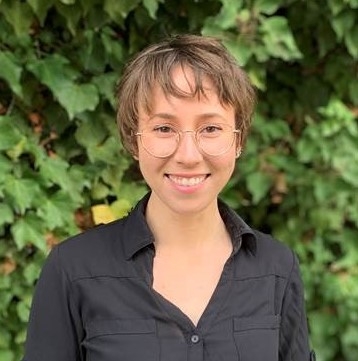
Elizabeth Grace
HEDS Postdoctoral Fellow, Lawrence Livermore National Laboratory
Short pulse (<10 ps), high-intensity (>1018 W/cm2) laser systems can be used to generate and probe extremely high energy and density conditions of matter. The plasmas produced by these high intensity laser systems can act as compact radiation sources, can emulate astrophysical phenomena like supernova and centers of giant planets, and even allow access to fusion regimes. Besides fundamental plasma physics, these ultra-intense laser-matter interactions also lend themselves to impactful scientific applications, including homeland security, renewable energy, and state-of-the-art medical techniques. A continuing fundamental need in the field of laser-driven High Energy Density (HED) and plasma physics is the accurate and precise spatial and temporal characterization of the laser pulse, which would provide valuable insight into the foundational physics that drive these interactions. Laser-plasma interactions are complex, rapidly evolving, and highly sensitive to shot-to-shot variations in laser parameters, such as laser peak intensity, pulse duration, pre-pulse, and focal spot, and/or thermal instabilities. Even under nominally identical laser conditions, small variations can drastically influence outcomes. However, in typical HED experiments currently, the complexity of the 3D laser electric field can mean that the wavefront is not often characterized, or that it is characterized in a surrogate setup or surrogate shot. To accurately understand these interactions, on-shot experimental techniques must be established and implemented. I will discuss the development of a single-frame laser characterization diagnostic for novel use on high-intensity, low repetition rate laser systems, its adaptation to high-repetition rate (>Hz) laser systems, its use in diagnosing and optimizing an ultra-intense laser system, and its role in developing a more complete understanding of the underlying laser-plasma interaction physics. Breakthroughs in these measurement capabilities can unlock an entirely new regime of experimental measurement, deliver a novel capacity to determine and assess pivotal factors that limit more precise control of laser-driven radiation sources, and serve as a necessary tool to improve laser-plasma interaction predictive capability.
Professor Avinash Dongare
Materials Science and Engineering, University of Connecticut
Short-pulsed lasers have enabled the capability to investigate th...

Professor Avinash Dongare
Materials Science and Engineering, University of Connecticut
Short-pulsed lasers have enabled the capability to investigate the dynamic response of metals at extreme strain rates of loading. The shock wave interactions with the rear surface allow the study of several dynamic phenomena in materials, such as shock compression behavior, spall failure, generation of ejecta, and the acceleration/impact of micro-flyers or particles. However, the current efforts to understand the plasticity mechanisms are primarily limited to the characterization of recovered microstructures. Recent advances allow the characterization of these mechanisms in real-time using in situ diffraction experiments (XRD). However, the ability to quantify the contributions from these mechanisms is lacking using experiments alone. As a result, current trends focus on developing computational tools to predict microstructure evolution during the various stages of laser-material interactions at the experimental length and time scales. This talk will present the current efforts at building a virtual framework to complement the interpretation of the results obtained using in situ laser shock experiments. At the atomic scales, we use classical molecular dynamics (MD) simulations to successfully capture various deformation modes (dislocation slip, deformation twinning, and phase transformation) in FCC and BCC metals. The use of simulated diffractograms at various stages of evolution using virtual XRD simulations enables the ability to understand the plasticity contributions to peak shifts/splitting/broadening behavior. A new virtual texture analysis (VirTex) algorithm is developed to characterize deformed microstructures, enabling the creation of simulated EBSD maps to compare with experimental EBSD maps. VirTex characterization enables the investigation of the role of grain orientations and misorientations on the phase/twinning variant selections during shock compression/release and the void nucleation behavior during spall failure. Modeling the laser-metal interaction uses a hybrid atomistic-continuum method that combines classical MD simulations with a two-temperature model (TTM) to accurately describe the ablation and spallation, melting, shock compression, and spall failure behavior. These capabilities of the MD and MD/TTM simulations are now extended to the scales of laser shock experiments using the quasi-coarse-grained dynamics (QCGD) simulations. This talk will demonstrate the ability of QCGD and QCGD/TTM simulations to model the phase transformation behavior of Fe systems, void collapse in Ta systems, and the acceleration of laser-driven flyers at the length and time scales of laser shock experiments.
Dr. Todd H. Rider
Rider Institute, Massachusetts Institute of Technology (MIT)
Nuclear reactions, which rearrange protons and neutrons within the nucleu...

Dr. Todd H. Rider
Rider Institute, Massachusetts Institute of Technology (MIT)
Nuclear reactions, which rearrange protons and neutrons within the nucleus, can release up to ~106 more energy than chemical reactions, which rearrange the surrounding electrons. For over 90 years, scientists and engineers have tried to develop attractive ways to extract that nuclear energy. Fission reactors work but are relatively expensive and produce large amounts of radioactivity. Thus far, candidate fusion reactors have appeared even more expensive yet still fairly radioactive, and struggle to produce more electrical energy output than the electrical energy input they consume. This presentation will “rederive” fusion (and other possible nuclear) energy systems from first principles, checking at each step along the way whether there might be better approaches that have not yet been fully explored.
S.-H. Dan Shim
School of Earth and Space Exploration, Arizona State University
It has been believed that water-rich planets are formed outside the snow ...

S.-H. Dan Shim
School of Earth and Space Exploration, Arizona State University
It has been believed that water-rich planets are formed outside the snow line. However, discovery of many close-in transiting sub-Neptunes, if at least some of them are water worlds, challenges the notion. Therefore, sub-Neptunes have been believed to be instead large Earth-like planets with thick hydrogen rich atmosphere. We have conducted a series of experiments under the pressure-temperature conditions expected at the boundary between hydrogen-rich atmosphere and rocky interior of a sub-Neptune. We found reaction between hydrogen and magma which can unlock oxygen from silicate magma and enable oxygen to react with hydrogen to form water. The chemical reaction can convert a dry hydrogen-rich planet to a water-rich planet inside the snow line. I will also discuss how such reaction can impact the atmosphere and the habitability of super-Earth exoplanets, many of which may be converted from sub-Neptunes.
Paul Grabowski
Lawrence Livermore National Laboratory
We present the results of the first Charged-Particle Transport Coefficient Code Comparison Worksho...

Paul Grabowski
Lawrence Livermore National Laboratory
We present the results of the first Charged-Particle Transport Coefficient Code Comparison Workshop, which was held in Albuquerque, NM October 4–6, 2016 in the context of planning for a second workshop. In the first workshop, scientists from eight institutions and four countries gathered to compare calculations of transport coefficients including thermal and electrical conduction, electron–ion coupling, inter-ion diffusion, ion viscosity, and charged particle stopping powers. We give general background on Coulomb coupling and computational expense, review where some transport coefficients appear in hydrodynamic equations, and present the submitted data. Large variations are found when either the relevant Coulomb coupling parameter is large or computational expense causes difficulties. We will present scientific goals and open questions for the next workshop. Understanding the general accuracy and uncertainty associated with such transport coefficients is important for quantifying errors in hydrodynamic simulations of inertial confinement fusion and high-energy density experiments.
Professor Yasunobu Arikawa
Institute of Laser Engineering, Osaka University
National ignition facility had succeeded to achieve fusion ignition. This is...

Professor Yasunobu Arikawa
Institute of Laser Engineering, Osaka University
National ignition facility had succeeded to achieve fusion ignition. This is the first time to see a burning plasma in lab in human history. The next step we have to pursue is understanding about the burning physics in the fusion plasma. Hydro dynamic simulations or recent measurements at NIF speculate the burn duration, which is overall a period of the burn propagation of NIF implosion, is about 80‒100 ps, therefore a detector with a picosecond temporal resolution is required to see the burn process. However, there is no fast neutron detectors with the sufficient temporal resolution. In this talk I introduce a new neutron detector with one picosecond time-scale resolution which will potentially be a next generation key diagnostic in NIF. It utilizes an electro-optical reaction and ultra-short chirped pulse laser probe instead of the conventional scintillation emission or Cherenkov emission.
Alex Do
Lawrence Livermore National Laboratory
Phase contrast imaging is a commonly used technique in optical and x-ray radiograph to image weakly absor...

Alex Do
Lawrence Livermore National Laboratory
Phase contrast imaging is a commonly used technique in optical and x-ray radiograph to image weakly absorbing phase objects through diffraction across transverse phase gradients. Recently, an X-ray phase contrast imaging platform has been developed on NIF, the Refraction Enhanced Radiography (RER), to study Inertial Confinement Fusion (ICF) indirect drive capsule implosion. RER provide the direct observation of density gradients with higher contrast than classic absorption. RER will provide insight into the observed reduced compression in recent ICF implosions. We focused our efforts on two different phases: We will present a first series of experiments is aiming to study the effect of the N+1 shock, the shock coming from the reflection of the rarefaction wave; and a second one is looking into measuring the early time trajectory of the ice-ablator interface. Following the high-quality data obtained from these experimental campaigns, we present the design of a new platform that is being developed for hydrodynamic instabilities studies, specifically for the reshock experiments. It will allow the observation of shock propagation inside a low-density CRF foam and the adjustment of the laser drive to avoid secondary reflected shock.
Dr. Yuji Fukuda
Kansai Photon Science Institute (KPSI)
National Institutes for Quantum Science and Technology (QST)
We introduce a new ion accele...

Dr. Yuji Fukuda
Kansai Photon Science Institute (KPSI)
National Institutes for Quantum Science and Technology (QST)
We introduce a new ion acceleration scheme using prominent characteristics of cluster targets for achieving multi-MeV quasi-monoenergetic proton bunch acceleration. In this scheme, the collisionless shock dynamics inside the micron-scale hydrogen cluster subsequently coupled with relativistically induced transparency (RIT) effect of high-intensity laser plays an important role. This multi-process can be synchronized in a self-consistent manner once conditions for the laser and cluster are satisfied, leading to the quasi-monoenergetic proton bunch acceleration. Here, the result of recent experiments, which demonstrate the quasi-monoenergetic proton bunch acceleration via interaction of micron-scale hydrogen cluster targets with PW-class laser pulses conducted using the J-KAREN-P laser facility at KPSI-QST, will be presented.





